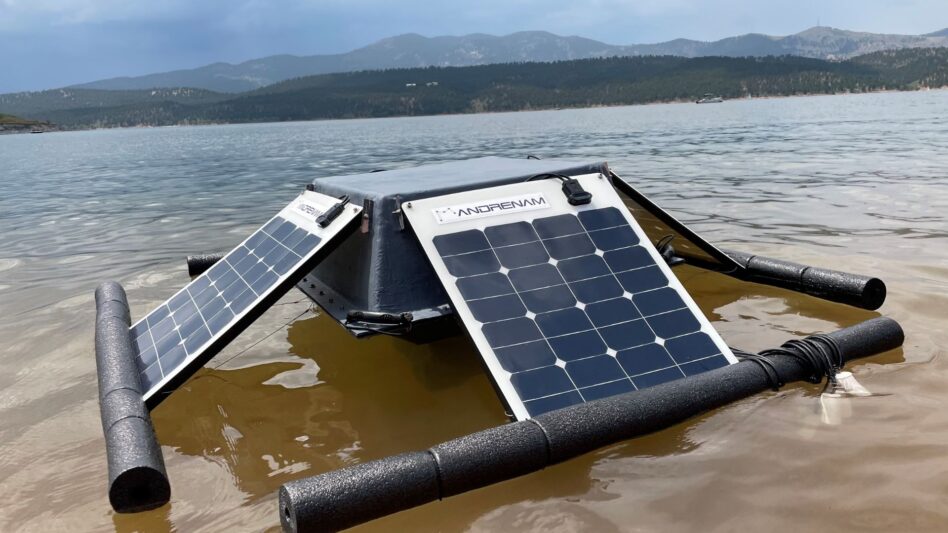Remember when we said that maritime is all the rage? Well, we’re back to prove our point. This week, AI-powered sonar company Andrenam announced they’ve raised $10M in seed funding to build out their core tech – a distributed network of underwater acoustic sensors.
- The round was led by First Round Capital, with participation from Also Capital, Long Journey, 201 Ventures, Banter Capital, Homebrew, Wave Function Ventures, and the Colorado School of Mines Venture Fund.
- Andrenam co-founder and CEO Matej Cernosek is a former SpaceX engineer, and his co-founder and CTO Alex Chu is a software engineer who’s worked in robotics and at Qualia.
- They’ve got a heavy-hitting team, including alums from Saronic, Anduril, and Palantir.
- According to the company, the round closed in just 36 hours.
When Tectonic chatted with Cernosek about the raise, he was on Capitol Hill meeting with lawmakers about his company. He said that a lot of this new funding will be used to double down on relationships in Washington, build out the team, and get sensors in the water to start collecting data.
“The goal is to be production ready,” he told Tectonic, “We need to showcase not only to people on the hill but also to the end users that we’re a serious player.”
Mike Annunziata, founder and GP at Also Capital and Andrenam’s first investor, told Tectonic that Cernosek and Chu “knew layers deeper about the technology and the market opportunity they were going after… that authenticity is really rare.”
Deep dive: We’ve said it before and we’ll say it again. The ocean is, like, extremely large, and very, very difficult to patrol. Especially in the Pacific (2027, anyone?), it can be hard to keep an eye on an enemy’s maritime activity and—this is key—the sneaky stuff happening beneath the water’s surface.
That’s where sensors are key. Hydrophones (underwater mics) and acoustic sensors have been used to track submarine activity since World War I—they essentially track sound under the water’s surface to get a sense of what’s going on. But here’s the problem—the tech available to analyze that sensor data is old and pretty clunky.
Enter: Andrenam.
- The company is building a distributed network of acoustic sensors (read: hydrophones) that collect the bumps, whirs, and rumbles under the water’s surface, then feeds that back into a database.
- Andrenam’s software then analyses that sonic data and uses machine learning to help users better identify threats.
“Our mission is to secure the oceans,” Cernosek said, “The use cases span everything from the detection of unmanned underwater vehicles, to unmanned surface vehicles, submarines, and ships. It creates a common operating picture of what’s going on in the ocean. We’re really the eyes and ears of the subsea here.”
Stack it up: The company’s goal is to be totally vertically integrated—they want to build the sensors themselves, the vessels carrying them at sea, and the software analyzing the data they collect.
Now that they’ve got the money, Cernosek said they’re going to hit the ground running building out that kit. The plan is to build buoys—yes, the floating things—that can carry the sensors, then get them in the water off of the California coast. The sooner these things are afloat, Cernosek said, the sooner they can start collecting data to build out their algorithm.
“We want to make sure we execute, and we want to keep kind of pushing the technological envelope here faster and faster,” he said.
Looking forward: Next up? More money, and eventually more advanced kit.
Cernosek says the company plans to go out for another round “fast.” “We’re moving very, very fast, and we’re going to continue moving fast, and this capital is going to catalyze that,” he said.
He also said that the buoys are not the end-state solution—they’re an inexpensive way to test the sensors and collect “information en masse.” Once they get those ready to rumble, he said the company will look to partner with companies that build more advanced vessels–like UUVs and USVs–to integrate the sensors into their systems.
“We’re just fundamentally focusing on the really hard thing, which is not unmanned surface or unmanned underwater vehicle technology. We’re working on sonar intelligence at scale,” he said.

